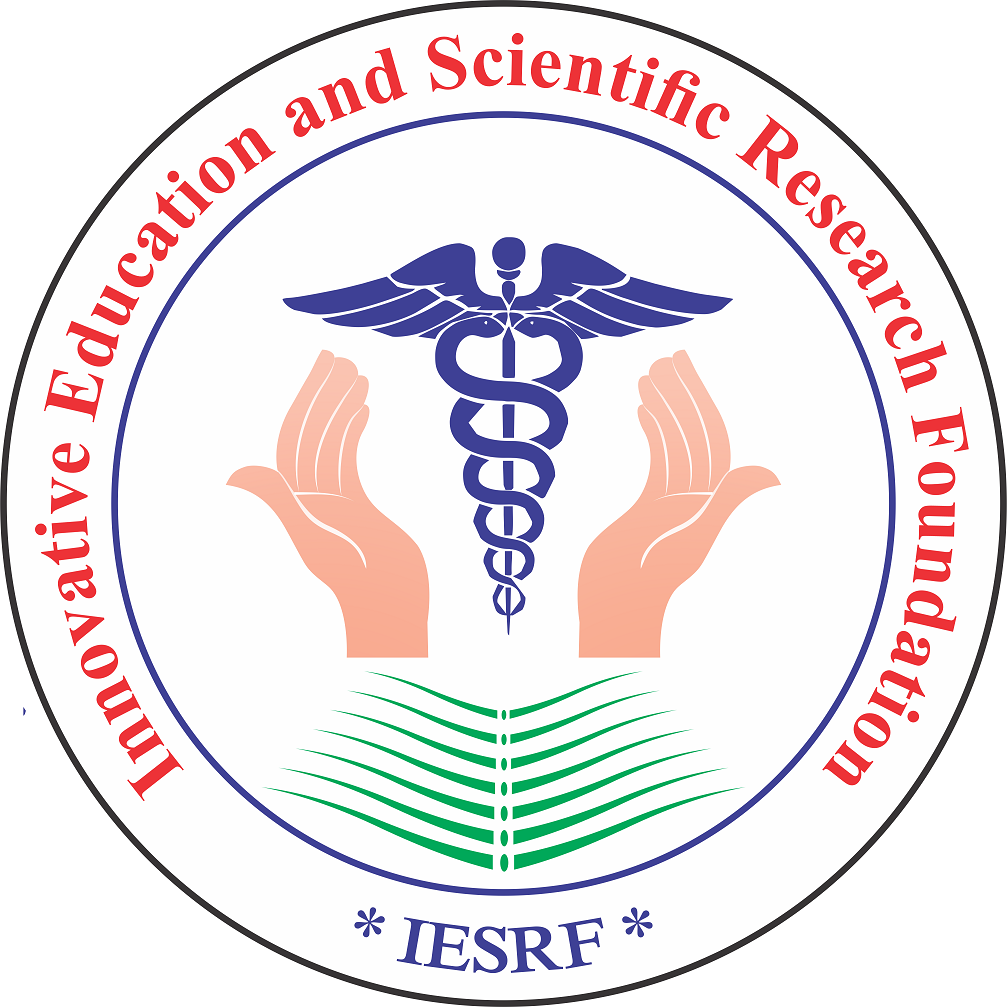- Visibility 315 Views
- Downloads 289 Downloads
- Permissions
- DOI 10.18231/j.ijfcm.v.12.i.3.12
-
CrossMark
- Citation
Clinico-epidemiological characteristics of self-inflicted injuries at tertiary care hospital in Barabanki
Background: Self-inflicted injury is an intentional and direct injury to one's own’s body part without any suicidal motive. Adult males are the main victims in the majority of the cases. The incidence of self-harm is increasing throughout the world and the main reasons for its rise are pressure from society, overuse of social platforms, which increases the gap between parents and their children.
Materials and Methods: This retrospective study includes two-year data from January 2021 to December 2022. Inclusion criteria include the patients who came into the emergency department with self-inflicted injuries. A total of 58 patients were enrolled in the study.
Results: In this study, 22% of subjects were female and 78% were male, 79% were unmarried and 21% were married. Parents' education of most of the patients was below the metric (65.51%). 18 cases (31%) belonged to parents having low socioeconomic status, 23 cases (39.65%) belonged to medium socioeconomic status and 17 cases (29.3%) belonged to higher socioeconomic status. Most of the patients belonged to nuclear families. The most preferred location of self-harm was the left wrist. The blade was the most common weapon used to cause self-inflicted injury, followed by a knife. The most common risk factors associated with such injuries were psychiatric illness and matter of love affairs. The most common psychiatric illness was anxiety disorder followed by depression.
Conclusions: Various ignored issues which play a significant role in acquiring self-inflicted injury, such as the low academic status of parents, the low-to-medium socioeconomic status of parents and nuclear family must be taken into consideration. Rejection in love affairs and psychiatric illness are the most common precipitating factors. Regular follow-up and psychiatric evaluation may be beneficial for limiting self-inflicted injury in the future.
References
- Greydanus DE, Shek D. Deliberate self-harm and suicide in adolescents. Keio J Med. 2009;58(3):144–51.
- Bhattacharya AK, Bhattacharjee S, Chattopadhyay S, Roy P, Kanji D, Singh OP. Deliberate self-harm: A search for distinct group of suicide. Indian J Psychol Med. 2011;33(2):182–7.
- Linehan MM, Comtois KA, Brown MZ, Heard HL, Wagner A. Suicide Attempt Self-Injury Interview (SASII): development, reliability, and validity of a scale to assess suicide attempts and intentional self-injury. Psychol Assess. 2006;18(3):303–12.
- Klonsky ED, Oltmanns TF, Turkheimer E. Deliberate self-harm in a nonclinical population: prevalence and psychological correlates. Am J Psychiatry. 2003;160(8):1501–8.
- Rabi S, Sulochana J, Pawan S. Self-inflicted cut injury as common method of deliberate self harm: A retrospective study from Nepal. Indian J Psychol Med. 2017;39(5):579–83.
- Manzoor S, Husain U, Jawwad I, Zafar D, Iqbal Z and Yasmin N. Self-inflicted injuries among young age group in Lahore, Pakistan. P J M H S. 2022;16(7):389–91.
- Corso PS, Mercy JA, Simon TR, Finkelstein EA, Miller TR. Medical costs and productivity losses due to interpersonal and self- directed violence in the United States. Am J Prev Med. 2007;32(6):474-482. Erratum in: Am J Prev Med. 2007;33(3):265.
- Chandika AB, Chalya PL, Hauli KA, Rambau PF, Mwakanyamale AA, Gilyoma JM. The burden and management of self-inflicted injuries at a tertiary care hospital in Mwanza, Tanzania. Tanzan J Health Res. 2018;20(2). doi:10.4314/thrb.v20i2.6
[Google Scholar] - Alowais FA, Alfaqeeh FA, Alammar AK, Mortada H, Skef Z, Alshammari M, et al. Patterns and characteristics of intentional self- inflicted hand injuries among military personnel: a retrospective study and proposal of treatment algorithm. Plast Reconstr Surg Glob Open. 2022;10(11):e4648.
- Selby EA, Bender TW, Gordon KH, Nock MK, Joiner TE Jr. Non- suicidal self-injury (NSSI) disorder: a preliminary study. Personal Disord. 2012;3(2):167–75.
- Limeres J, Feijoo JF, Baluja F, Seoane JM, Diniz M, Diz P. Oral self- injury: an update. Dent Traumatol. 2013;29(1):8–14.
- Klonsky ED, Olino TM. Identifying clinically distinct subgroups of self-injurers among young adults: A latent class analysis. J Consult Clin Psychol. 2008;76(1):22–7 Khan et al. / Indian Journal of Forensic and Community Medicine 2025;12(3):209–213 213
- Sanchez-Teruel D, Robles-Bello MA, Camacho-Conde JA. Self- inflicted injuries in adolescents and young adults: a longitudinal approach. Psicothema. 2020;32(3):322–8.
- Stanley B, Gameroff MJ, Michalsen V, Mann JJ. Are suicide attempters who self-mutilate a unique population? Am J Psychiatry. 2001;158(3):427–32.
- Huisman M, Oldehinkel AJ. Income inequality, social capital and self-inflicted injury and violence-related mortality. J Epidemiol Community Health. 2009;63(1):31-7.
- von Rueden U, Gosch A, Rajmil L, Bisegger C, Ravens-Sieberer U. Socioeconomic determinants of health related quality of life in childhood and adolescence: results from a European study. J Epidemiol Community Health. 2006;60(2):130–5.
- Rostila M, Berg L, Arat A, Vinnerljung B, Hjern A. Parental death in childhood and self-inflicted injuries in young adults—a national cohort study from Sweden. Eur Child Adolesc Psychiatry. 2016;25(10):1103–11.
- Forman EM, Berk MS, Henriques GR, Brown GK, Beck AT. History of multiple suicide attempts as a behavioral marker of severe psychopathology. Am J Psychiatry. 2004;161(3):437–43.
- Hawton K, Saunders K, Topiwala A, Haw C. Psychiatric disorder in patients presenting to hospital following self-harm: a systemic review. J Affect Disord. 2013;151(3):821–30.
How to Cite This Article
Vancouver
Khan MA, Khan Z, Verma M. Clinico-epidemiological characteristics of self-inflicted injuries at tertiary care hospital in Barabanki [Internet]. Indian J Forensic Community Med. 2025 [cited 2025 Oct 30];12(3):209-213. Available from: https://doi.org/10.18231/j.ijfcm.v.12.i.3.12
APA
Khan, M. A., Khan, Z., Verma, M. (2025). Clinico-epidemiological characteristics of self-inflicted injuries at tertiary care hospital in Barabanki . Indian J Forensic Community Med, 12(3), 209-213. https://doi.org/10.18231/j.ijfcm.v.12.i.3.12
MLA
Khan, Mohammad Abdurrahman, Khan, Zainab, Verma, Manisha. "Clinico-epidemiological characteristics of self-inflicted injuries at tertiary care hospital in Barabanki ." Indian J Forensic Community Med, vol. 12, no. 3, 2025, pp. 209-213. https://doi.org/10.18231/j.ijfcm.v.12.i.3.12
Chicago
Khan, M. A., Khan, Z., Verma, M.. "Clinico-epidemiological characteristics of self-inflicted injuries at tertiary care hospital in Barabanki ." Indian J Forensic Community Med 12, no. 3 (2025): 209-213. https://doi.org/10.18231/j.ijfcm.v.12.i.3.12
